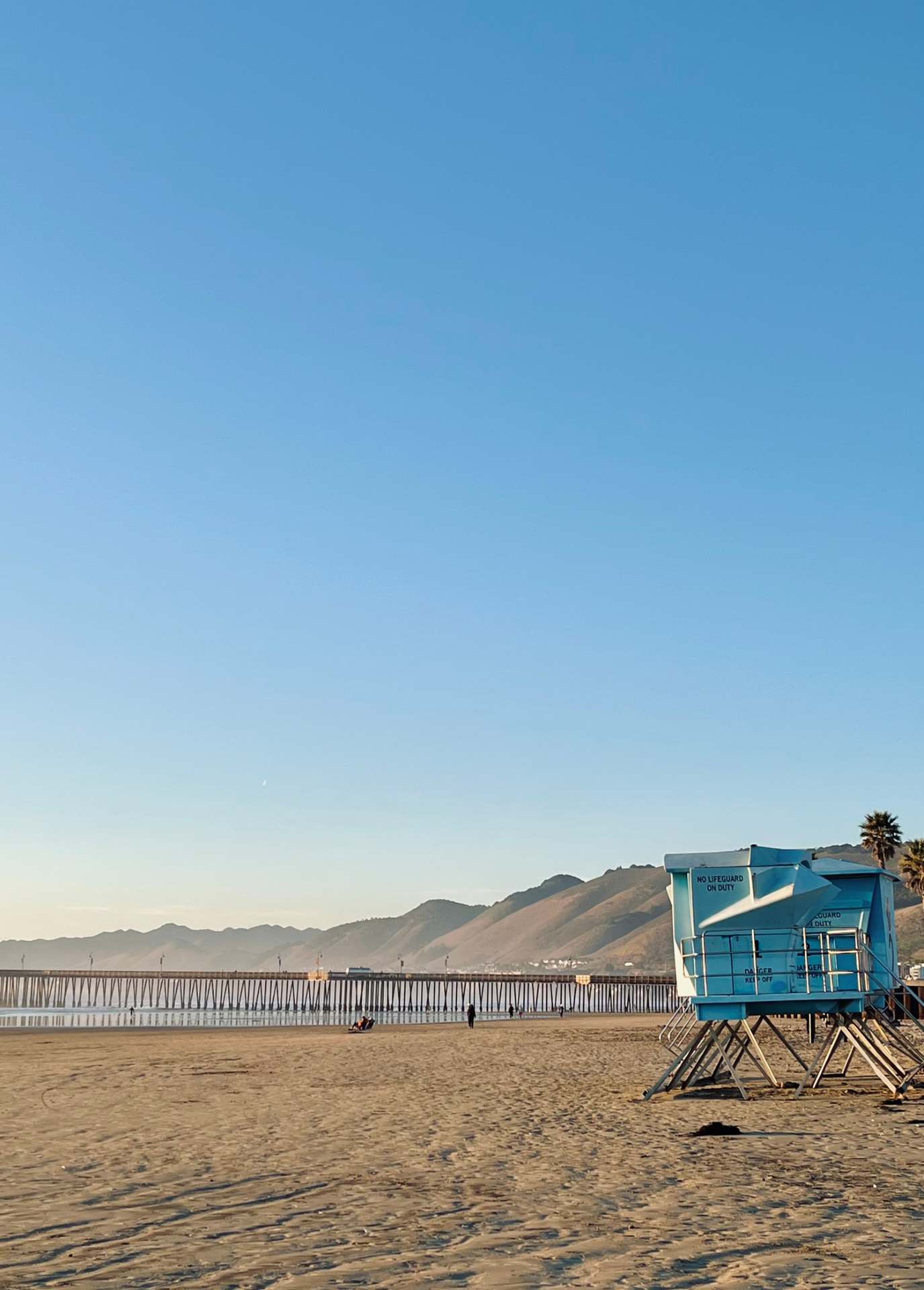If you’re in Pismo, head to the beach for a sunset walk. It’s beautiful.
Perhaps the most famous landmark of Pismo Beach is the pier. These days, visitors and locals visit for leisure. The pier and wharf was originally built in the 1880s for commercial reason. Twenty-eight venture capitalists invested $16,000. In her book and her personal collection, Effie McDermott has an image of the promotional map dated 1887. It shows 300 town lots, along with the wharf. In 1924, a 1,740-foot long pier was built.
People have long enjoyed these sandy beaches, which stretch for nearly twenty miles through Pismo, Grover Beach, and Oceano. Photographs dating back to the 1890s show a “tent city” that set up each summer. Tents and women bathing suits could both be rented. Bathhouses, 25 cents. And clams were everywhere.

The plaza with its now iconic neon sign is the most visited part. This is not where I went for my sunset walk. The pier parking is often full so we usually head over to Addie Street, a few blocks from the pier. Parking here is free.
The skies were clear, which is not always a given.
Lots of people were at the beach, some walking their dogs, some riding their bikes, and lots of kids running free.
For photography, the hour before sunset is the magic hour, with its golden glow. Generally, high noon is not the best, as it can cast harsh shadows. I’ve taken a lot of surf photographs when the sun is so blindingly bright that colour collapses and you get highly-contrasted black and white photos with a blue undertone. There is something so beautiful about it as well.
Another fun – and also help – thing to do is get a filter. There are a few brands I quite like, such as Urth and Hoya. Urth has a 3-in-1 (UV, Circular Polarizing, and Variable Neutral Density). You’ll to decide which lens you want a filter for and confirm the lens size. This is not the same as focal length. Lens with filter threads will have the lens size on it and is marked in mm or ø.
On this particular walk, the low tide left a reflective surface that created many interesting images that blurred sea and sky. It’s also a great time to watch birds, alert for dinner. I stayed a respectable distance and watched them move in sync. Water and reflective surfaces are a lot of fun to experiment with for photos.


The Central Coast of California, from Malibu to northern San Luis Obispo County, was home for thousands of years to a native population collectively referred to today as the Chumash. Within the Chumash, tribal groups and families distinguish themselves by name and kinship origin. The Pismo Beach area was home to those generally referred to today as the Northern Chumash and Yak Tityu Tityu, “The People”.
Effie McDermott, Images of America: Pismo Beach
Long before the Spanish, Russian, English, and Portuguese came to these shores, as early as the 15th century, Chinese scouts had already come. Before then, the Polynesians. In her book, Effie shares that Pismú, meaning “tar” or “the tar place”, was a Chumash village in Price Canyon. That’s the origin of Pismo Beach, the city founded by John Michael Price (1810 – 1902). In 1851, Price created “Rancho del Pismo”, on lands of the Pismo Land Grant given to José Ortega that was first sold to Issac Sparks (1804-1867). (Another story is that Sparks actually won it in a card game.) The town Pizmo, its name then, grew and in a few decades, Price, Main, and Pismo became the first main streets.
The Price family home, which fell into disrepair, got attention before demolition. The Friends of Price House formed to restore and preserve it. The house’s name – the Price Anniversary House – refers to the timing of its construction with their 50th wedding anniversary.





Pismo Beach, popular with tourists, can get really packed. Finding these quiet and spacious walks can make a difference to your vacation. Or just another day living in Central Coast. Head to the beach and enjoy the sunset. What a difference it makes to be barefoot in the sand and taking in the ocean air.
